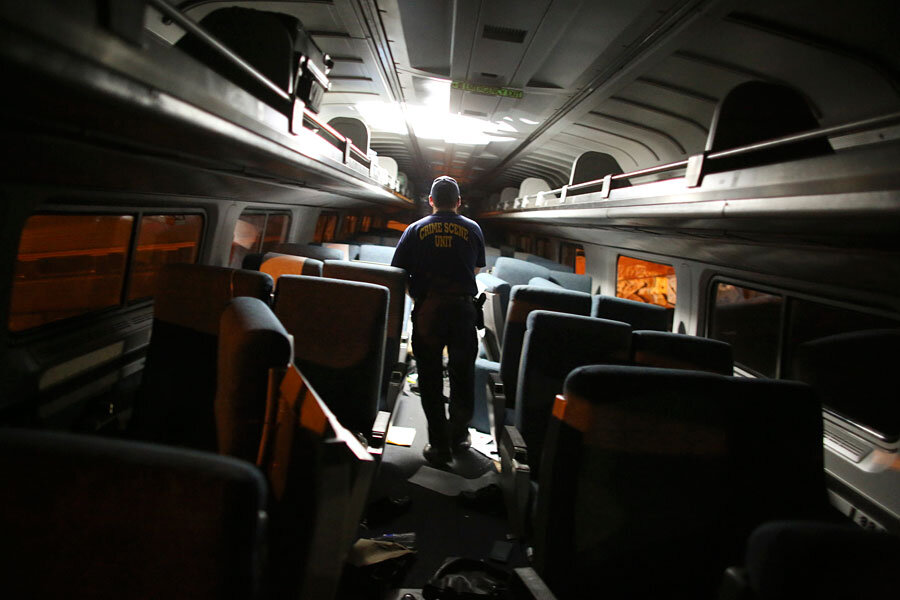Investigators seeking answers in fatal Amtrak derailment
Loading...
| Philadelphia
Daylight revealed mangled train cars Wednesday after an Amtrak passenger train derailed and overturned in Philadelphia, killing at least six people and injuring dozens of others, some of whom had to scramble through the windows to escape.
Tuesday night's accident closed the busiest rail corridor in the U.S., between New York and Washington, as investigators looked for what went wrong. More than 140 people were hospitalized, and six were critically injured.
Mayor Michael Nutter, who confirmed the deaths, said not all of the people on the train had been accounted for. Amtrak said the train was carrying 238 passengers and five crew members.
"It is an absolute disastrous mess," Nutter said. "I've never seen anything like this in my life."
He said all seven train cars, including the engine, were in "various stages of disarray." He said there were cars that were "completely overturned, on their side, ripped apart." The engine was completely separated from the rest of the train, and one of the cars was perpendicular to the rest of the cars, he said.
The train, traveling from Washington, D.C. to New York City, was going into a turn when it started to shake before coming to a sudden stop.
Paul Cheung, an Associated Press manager who was on the train, said it "started to decelerate, like someone had slammed the brake."
"Then suddenly you could see everything starting to shake," he said. "You could see people's stuff flying over me."
Another passenger, Daniel Wetrin, was among more than a dozen people taken to a nearby school.
"I walked off as if, like, I was in a movie," Wetrin said. "There were people standing around, people with bloody faces ... power cables all buckled down as you stepped off the train."
The area where the derailment occurred is not far from the scene of one of the deadliest U.S. train accidents: the 1943 derailment of The Congressional Limited, from Washington to New York, which killed 79 people.
Amtrak said rail service on the Northeast Corridor between New York and Philadelphia had been stopped.
Former U.S. Rep. Patrick Murphy was on the train and tweeted photos of firefighters helping other people in the wreckage.
"Pray for those injured," he said.







